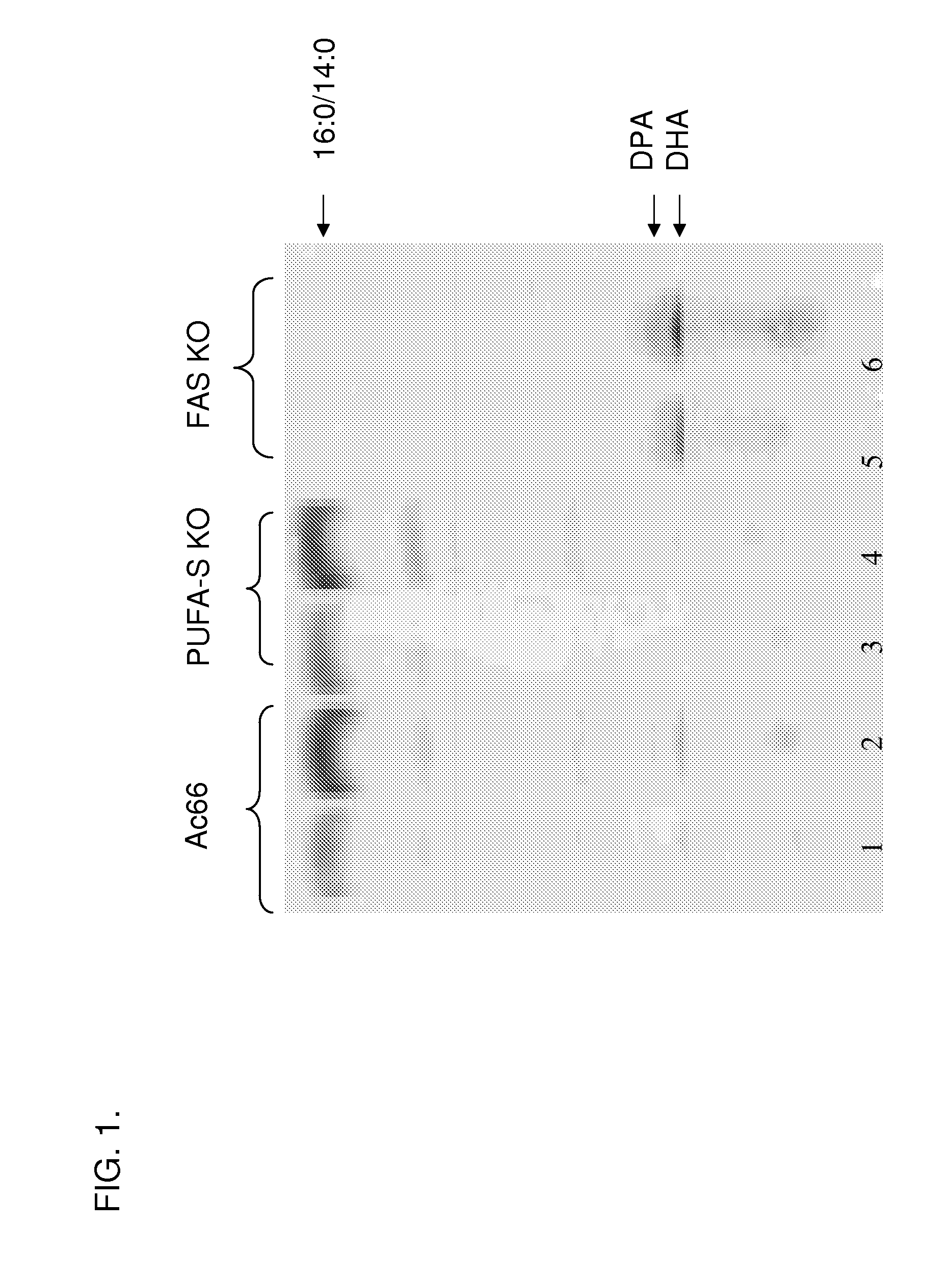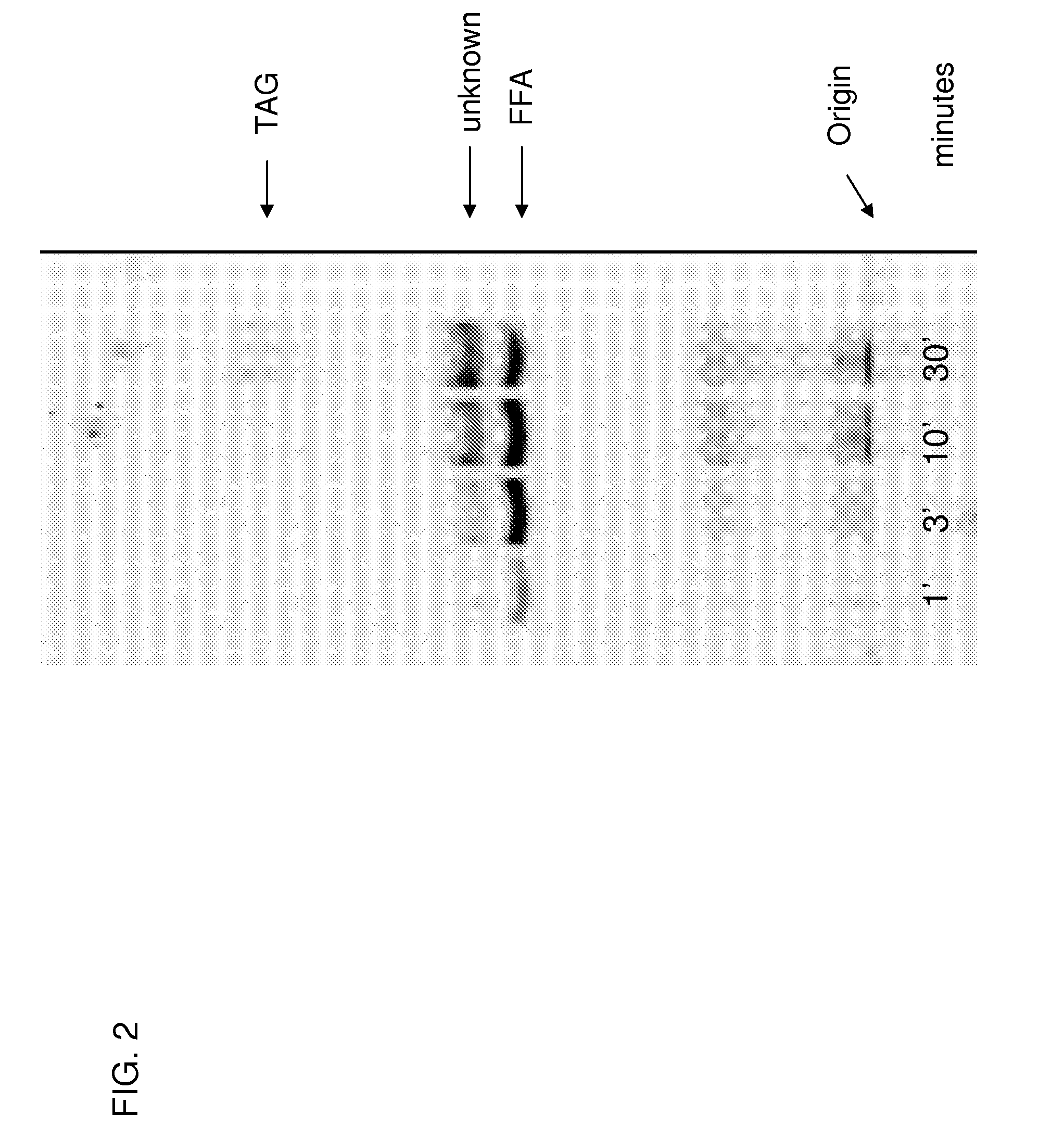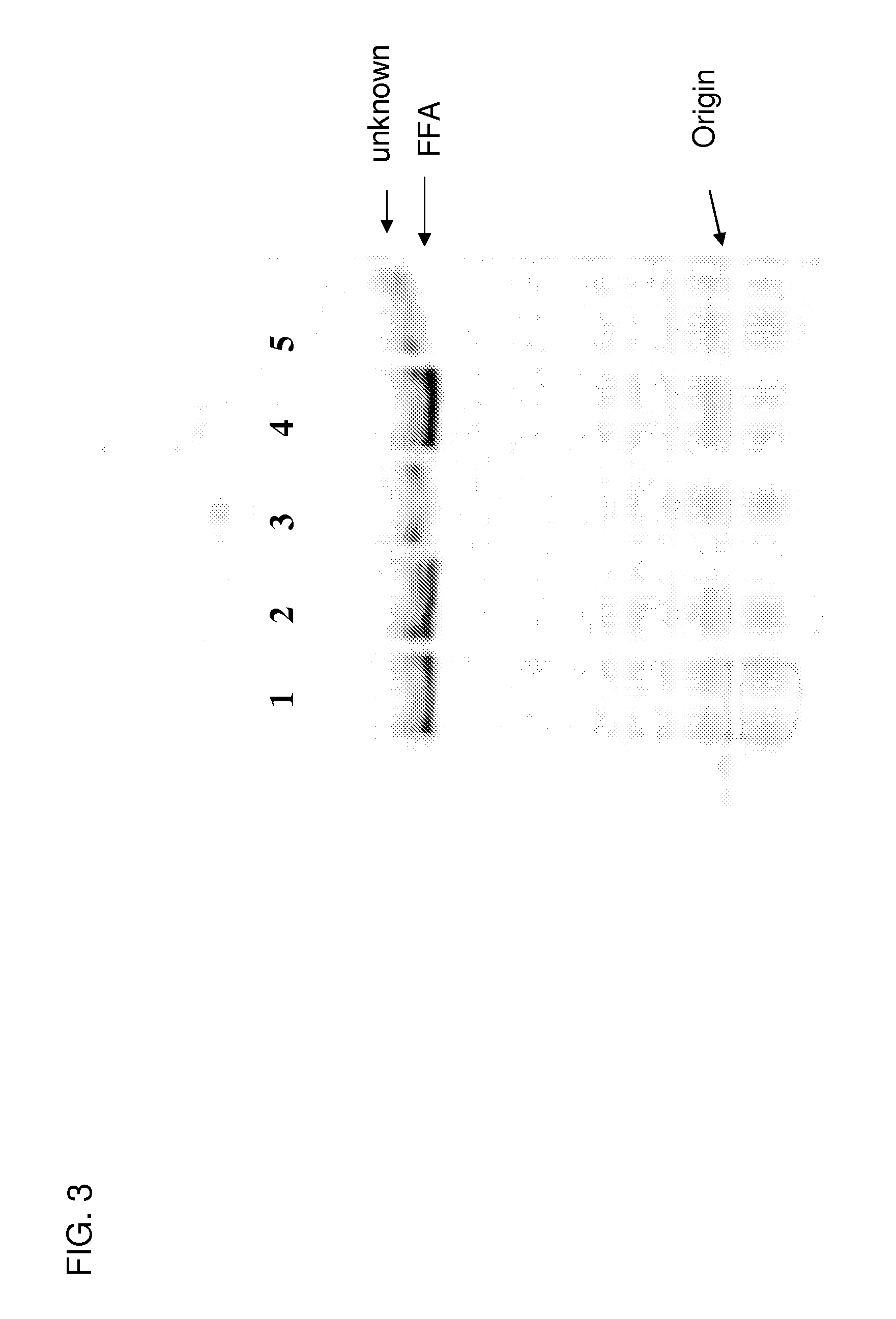Polyunsaturated fatty acid production in heterologous organisms using pufa polyketide synthase systems
a polyunsaturated fatty acid and heterologous organism technology, applied in the direction of ligases, vector-based foreign material introduction, chemical production, etc., can solve the problem that the current supply of pufas from natural sources and chemical synthesis is not sufficient for commercial needs, and achieves the effect of increasing the level of malonyl coa, and reducing competition for malonyl coa
- Summary
- Abstract
- Description
- Claims
- Application Information
AI Technical Summary
Benefits of technology
Problems solved by technology
Method used
Image
Examples
example 1
[0414] This example describes the creation of a Schizochytrium FAS knockout strain for biochemical studies.
[0415]Schizochytrium contains a single large gene that encodes the FAS enzyme responsible for production of short chain saturated fatty acids (described in U.S. Patent Application Publication No. 20050191679 A1). A Schizochytrium FAS knock out (FAS-KO) construct was made using procedures described in U.S. Pat. No. 7,001,772. An ˜10.0 kB EcoRV fragment of genomic DNA containing most of the FAS Orf (from about 728 bp downstream of the presumed ATG start codon to about 680 bp downstream of the stop codon) was cloned into a Stratagene bluescript vector (pBSK) at the EcoRV site of the multiple cloning region. An ˜3.5 kB internal BglII fragment was removed from the cloned Schizochytrium DNA and replaced with an ˜1.1 kB BamHI fragment from pTubZeo11-2 containing a Zeocin resistance cassette (see U.S. Pat. No. 7,001,772, supra). The plasmid (pJK878) was introduced into a cell wall def...
example 2
[0416] The following example describes the general protocol for preparation of cell free extracts of Schizochytrium Ac66, and PUFA synthase KO and FAS-KO strains derived from Schizochytrium Ac66.
[0417] An example of a protocol for preparation of cell free homogenates (CFH) from the cell wall deficient strains of Schizochytrium is as follows. Cells were grown in A50-3 medium and then diluted into M2B medium. The media used for growing the KO strains were supplemented with the appropriate fatty acid. Cells were grown to an OD600 nm of >˜2.5 and 2. Samples were stored at −74° C. until needed.
example 3
[0418] This example describes the general conditions for in vitro FAS and PUFA synthase activity assays.
[0419] An example of a protocol for in vitro activity assays of both FAS and PUFA synthase activities is as follows. In a final volume of 100 uL, mix the enzyme preparation and Buffer A (volume of these 2 components=90 uL) plus the following components added as a cocktail (in 10 uL) to yield the final concentrations indicated in parenthesis: malonyl-CoA (50 uM—a mixture of cold and malonyl-2-14C-CoA such that the final concentration of radiolabel is 0.65 μCi / mL), NADH (1 mM), NADPH (1 mM) and acetyl-CoA (10 uM). These components and additional components can be adjusted depending on the requirements of the particular experiments. The assay reactions are carried out in glass tubes in a room temperature (˜21° C.) water bath. The time of incubation is dependant on the experimental requirements. The reactions are stopped by one of two methods depending on the work-up protocol. For co...
PUM
| Property | Measurement | Unit |
|---|---|---|
| temperatures | aaaaa | aaaaa |
| melting temperatures | aaaaa | aaaaa |
| temperature | aaaaa | aaaaa |
Abstract
Description
Claims
Application Information
 Login to View More
Login to View More - R&D
- Intellectual Property
- Life Sciences
- Materials
- Tech Scout
- Unparalleled Data Quality
- Higher Quality Content
- 60% Fewer Hallucinations
Browse by: Latest US Patents, China's latest patents, Technical Efficacy Thesaurus, Application Domain, Technology Topic, Popular Technical Reports.
© 2025 PatSnap. All rights reserved.Legal|Privacy policy|Modern Slavery Act Transparency Statement|Sitemap|About US| Contact US: help@patsnap.com



